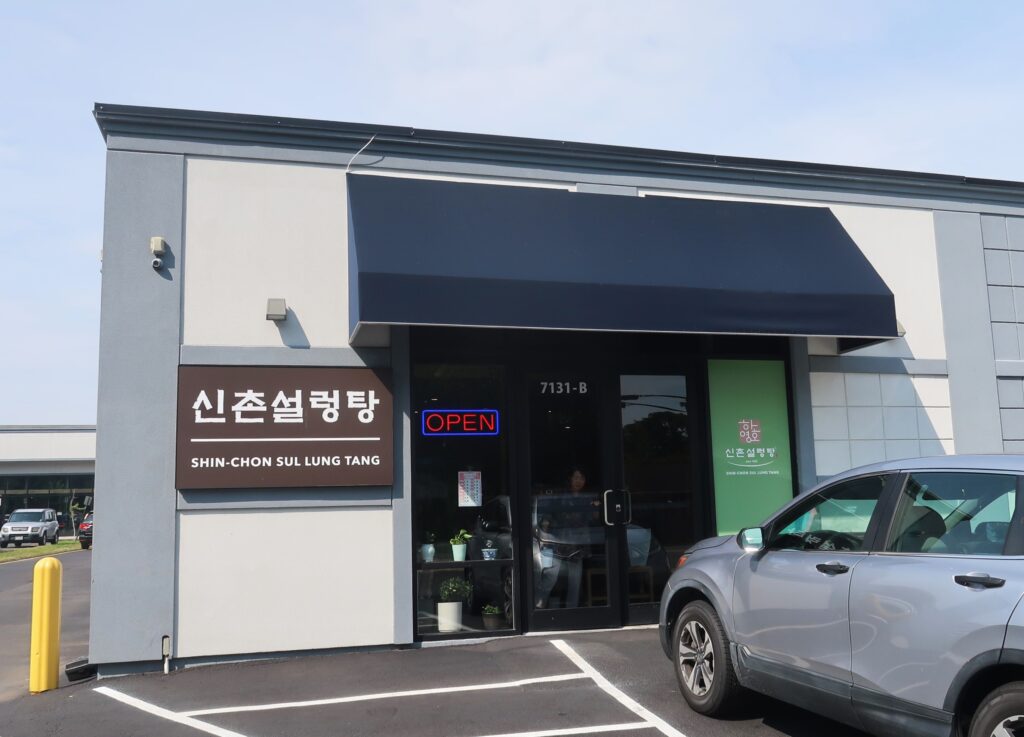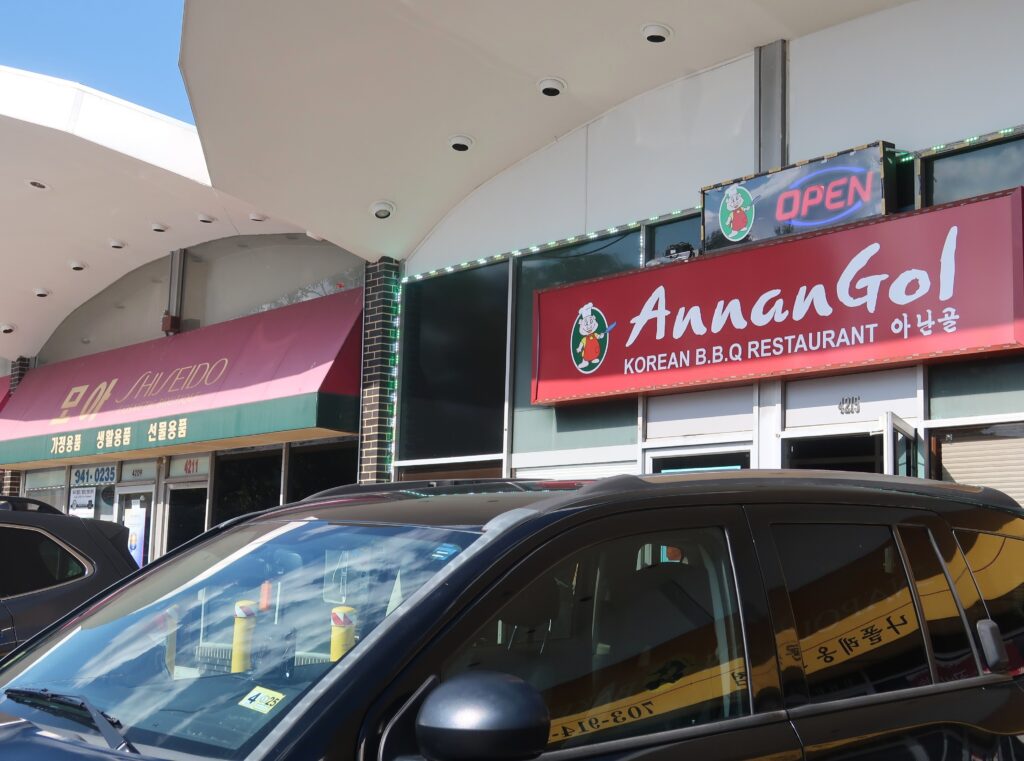Koreans made Annandale unique

How did Annandale come to be known as “Koreatown”?
Community activist, business owner, and longtime Annandale resident Steve Lee offered an explanation at a recent discussion session at George Mason Regional Library.
Koreans started moving to the area in the 1970s and 80s, Lee said. Before that, the Korean government wouldn’t let people emigrate.
Like so many other immigrants, “Koreans came because they couldn’t make a living back home. When they got here, they worked hard and their kids studied hard,” he said.
Lee’s own parents worked in D.C. and chose to live in Annandale because of its proximity to Washington and because of the good schools here. Annandale High School was then considered one of the best schools in the country, he noted.
“The American community accepted us because we work hard,” Lee said.
The Annandale Central Business District Planning Committee did a survey a few years ago and found 58 percent of the commercial properties were owned by Koreans.
That includes most of the office condos. Koreans own about 90 percent of the Evergreen office condominiums on Little River Turnpike and Evergreen Lane.
“It was office workers who helped created Annandale’s Koreatown,” Lee said. Koreans who worked here met at Korean restaurants, but many of those restaurants didn’t make much of an effort to attract the broader population.

“By 1988, we probably had 100 restaurants here just catering to Koreans,” he said. “The menus were in Korean, the staff didn’t speak English, and Americans felt they weren’t welcome.”
Local officials tried to get Koreans more integrated into the general community. That effort didn’t succeed because so many of them were working 18 hours a day and didn’t have extra time for community activities.
There are other Koreatowns in the region – in Centreville and Ellicott City, Md. – but the one in Annandale is the closest to D.C. and the best known.
Those other locations have more Korean restaurants than Annandale – there are 142 in Centreville and 110 in Ellicott City. The restaurants in Annandale continue to attract people from across the region, and new ones keep opening.
One of the properties Lee owns on Little River Turnpike encompasses 9292 Korean BBQ; the 9292 Shabu hot pot restaurant; ShinChon Sullungtang, which specializes in bone broth; Café V; and the Woori meat shop.
Lee believes having a Koreatown in Annandale gives the community a unique feature that brings people here from throughout the region. The Korean restaurants do well because they attract diners from all over.
While Koreans own much of the commercial property, many have moved away, however, often to places like Centreville and Vienna.
Related story: Construction completed on Annandale’s Korean Community Center
Koreans don’t vote in large numbers because of their tradition of working long hours. That should no longer be an excuse, said Lee, who was one of four candidates in the Democratic Primary last year for Mason District supervisor.
Last year, there were just 1,100 Korean-Americans in Annandale registered to vote.
As Annandale has become more diverse, there were efforts to promote dialogue among long-time residents and immigrants. Lee was among the founders of the first Taste of Annandale in 2015, which was aimed at bringing the whole community together.
“Most people who live in the Annandale area are very good citizens who enjoy living and working among a diverse population,” he said.

Lee is president of the Korean American Association of Greater Washington, which is based in the Korean Community Center, located in an office building at 6601 Little River Turnpike in Annandale.
He was part of a group of Korean leaders who spent 12 years working on the effort to acquire a property and raise the funds to open a community center. The Korean Embassy, the Fairfax County government, and the community all chipped in to make it happen.
The association would like to share the space with other groups and create programs for the community, Lee said, “but we’re not there yet.”
“The purpose is to give back to the community,” he said. “It’s not just for Koreans. It’s for everybody.”
One of the Korean American Association’s biggest projects is the annual KORUS Festival, which is supported by the Korean Embassy and is aimed at fostering a closer relationship between Korea and the U.S.
KORUS was held in Annandale for the first few years – at what was then the Kmart parking lot – then was relocated to other communities. Two years, ago, Lee helped bring it back to Annandale and he hopes it will stay here. “It started as a party for Koreans; now it’s a festival for everyone.”
Related story: KORUS Festival features K-pop, food, traditional arts, and much more
When Lee’s parents immigrated from Korea in 1976, the family first settled in Jefferson Village in Falls Church and moved to Kalorama Road in Annandale in 1978. They came here because they had a sponsor here, he said.
His family was among the first Koreans to settle in Annandale, but by the time Lee attended Annandale High School, there were about 100 Korean students.
At Annandale, Lee tried to gain approval for a Korean student association in the early 1980s. When that proposal was rejected, he was told by school officials that it would discriminate against other immigrant groups.
Like many first-generation Americans, Lee’s parents don’t speak English. Many of those in the 1.5 generation – the children of Korean immigrants – don’t know or care about Korean culture other than the food, he said.
Lee considers himself part of the 1.75 generation, because he was born and educated in Korea and understands Korean culture, and as such, he sees himself as a bridge between the two worlds.
Now, he would like to see the Korean community more involved in the broader Annandale community. “Annandale has so much potential,” he said. The best things about this community are its proximity to D.C., the great schools, and its diversity.
The session by Lee on Koreatown is part of a monthly series on local history at George Mason Regional Library. The topic for the next presentation in the series, on Sept. 9, will address how African Americans fought racial barriers.


Koreatown is as far from diverse – its-
Unique….ok?
The business techniques they used when negotiating purchase of existing business….was unique.
The way they dealt with my business was so unique I refused to work for them again.
It was a great story but there is a very dark side to the businesmen who made it all happen.
can/will you elaborate? Is there some sort of Korean Mafia we don’t know about running around in Annandale?
Many of us simply do not know Korean cuisine. The Taste of Annandale might be a good opportunity to showcase the many delicious dishes that can be had at our numerous Korean restaurants. In my limited experience of eating at several of our Korean restaurants, not being Korean I am always at a loss for what to order. Better menu descriptions and more engaged servers might help.
I highly recommend this Korean Food Tour in in Annandale – https://virginialicious.com/
My husband and I took the tour this summer. Showcased delicious mom and pop Korean restaurants in the area with a fantastic guide!
I have met and talked with Steve a few times when I have been in Cafe V; he and his wife are very nice. Thank you Steve for your hard work in our community!